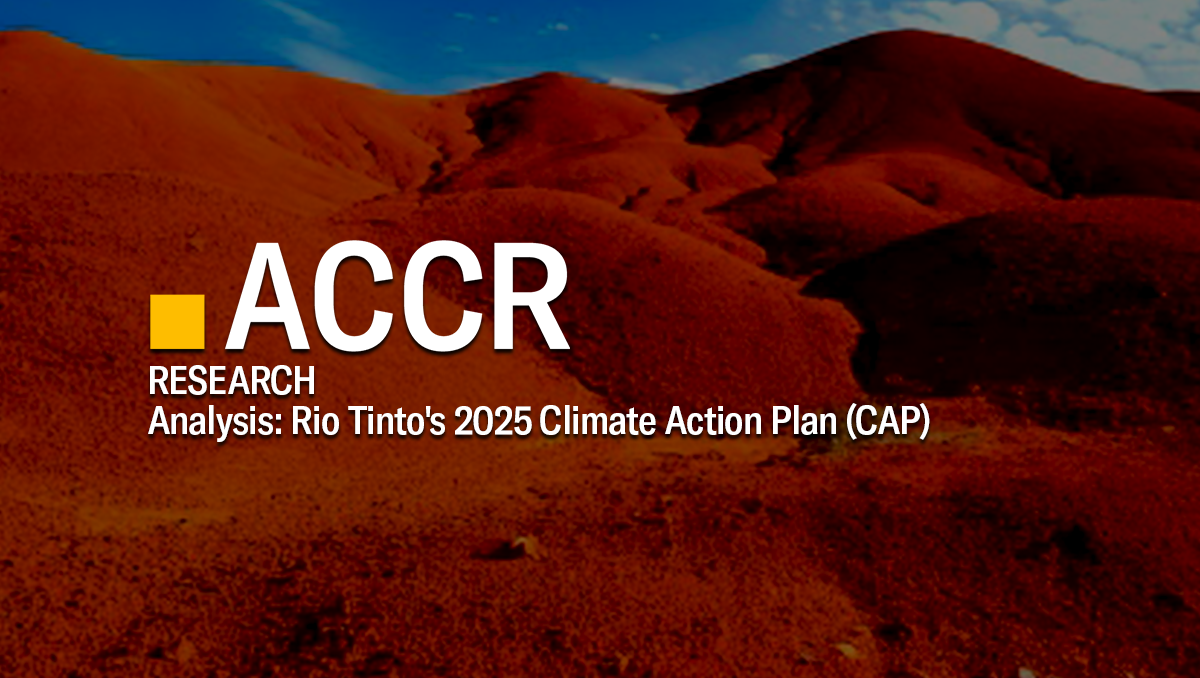Publication Analysis: Rio Tinto's 2024 Climate Action Plan (CAP)
Executive summary
Investor engagement has played a pivotal role in shaping and strengthening Rio Tinto’s approach to climate. Since the release of the company’s first Climate Action Plan (CAP) in 2021, sustained investor scrutiny and dialogue have helped drive improvements in transparency, governance, and the company’s strategic direction on decarbonisation.
Building on this momentum, Rio Tinto’s 2025 CAP demonstrates the extent to which the company has moved. Investors can claim significant wins from the company’s improved disclosures on scope 3 emissions and steel decarbonisation spend, its enhanced climate policy engagement and strengthened governance framework.
However, as the need for a faster energy transition becomes more critical for long-term investors, further engagement is needed to address the 2025 CAP’s shortcomings. Rio Tinto remains the highest scope 1 & 2 emitter amongst its peers, has used offsets to meet its near-term scope 1 & 2 targets, and is using an emissions reduction pathway that does not appear to be aligned with the Paris Agreement.
Further investor engagement will be needed to ensure that Rio Tinto develops the capability to more strongly position itself to deliver long-term value in an accelerating energy transition.
Key findings
Value chain emissions (scope 3)
- Scope 3 emissions remain significant at a company and global level, but Rio Tinto has made significant progress on disclosures and its engagement with steel decarbonisation - it now partners with 40 organisations across 10 countries and has committed $200-350 million1 to 2027. However, it still does not have an overall medium or long-term scope 3 reduction target.
Operational emissions (scope 1 & 2)
- Rio has ambitious scope 1 & 2 targets and is making progress, but will need to more than double what it has reduced to date (4.9 MtCO2e) to meet its goal of a 50% reduction (13 MtCO2e) in emissions by 2030.
- Accelerating the uptake of renewables and other green technologies will be key to decarbonising Rio’s aluminium operations – responsible for 77% of the company’s scope 1 & 2 emissions, but the use of offsets to meet its near-term target is a concern for ACCR.
- Despite the company’s stated support, its reduction pathway does not appear to align with the Paris Agreement.
Capital allocation
- Rio’s revised capital guidance for its decarbonisation spend reflects a shift toward renewable PPAs and offsets over direct structural investment. However, while PPAs can be effective, they cannot replace the large-scale investments in zero emissions technologies required to decarbonise areas like metals and minerals processing, and diesel use.
Climate policy advocacy and lobbying
- Asset-level policy briefings and stronger disclosures reflect a genuine shift towards constructive advocacy. However, Rio’s undisclosed lobbying in 2024 to weaken proposed Australian Government climate provisions damaged trust. The company can also further improve its industry association disclosures.
Download a PDF of Analysis: Rio Tinto's 2025 Climate Action Plan (CAP) | 14/04/25
Please read the terms and conditions attached to the use of this site.
